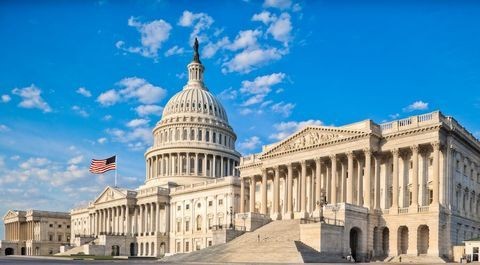Unified Patent Court: Counterclaims for Revocation
Client Alert | 9 min read | 12.01.15
Crowell & Moring's series of alerts provides practical information and
professional comment on all the ramifications regarding the introduction
of the Unified Patent Court (UPC). For further information, please see our UPC leaflet PDF or contact the lawyers listed near the bottom of each alert. To view other alerts in this series, please click here.
Within infringement proceedings, a counterclaim for revocation is a classic means of defense, particularly in cases where the validity of the invoked patent seems highly questionable. This will probably not change under the new UPC system. The Rules of Procedure clarify that any statement of defense (in the context of infringement proceedings), including an assertion that the allegedly infringing patent is invalid, shall be treated as a counterclaim for revocation (Rule 25.1).
Unlike for genuine revocation actions (which fall under the exclusive jurisdiction of the central division), if an infringement action is already pending before a local and/or regional UPC division, that division can also hear counterclaims for patent revocation (Article 33 of the UPC Agreement). Hence, the UPC Agreement foresees a number of different scenarios regarding revocation proceedings in the context of infringement proceedings; which of these scenarios will apply will depend on the division (local, regional or central) before which the initial infringement is brought. In this third issue in our UPC Q&A-series we take a closer look at those scenarios.
1. What are the different scenarios for counterclaims for revocation?
If an infringement action is initiated before the central division of the UPC and a counterclaim for revocation is invoked, both infringement and validity will be dealt with together. This is traditionally the case in most European jurisdictions.
If an infringement action is brought before a local or regional division, and a counterclaim for revocation is brought before the same division, this division shall, after having heard the parties, have discretion regarding the further course of the proceedings. According to Article 33(3) of the UPC Agreement, the local or regional division has the following three options:
- The local or regional division may proceed with both the infringement action and with the counterclaim for revocation (if invoked by the defendant). In that event, the division has to request the allocation of a technically qualified judge, in the field of technology concerned, from the Pool of Judges (in accordance with Article 18(3) of the UPC Agreement).
- Alternatively, the local or regional division may, with the consent of both parties, refer the entire case to the central division where infringement and revocation will be dealt with together.
- Finally, the local or regional division may refer the counterclaim for revocation to the central division and itself either suspend or proceed with the infringement action, depending on the circumstances of the case.
Only in the last scenario, would the infringement and revocation proceedings be dealt with by different courts. This is the so-called (German-style) bifurcation of the proceedings, which leads to parallel infringement and revocation proceedings with regard to the same patent. Bifurcation at UPC-level not only leads to parallel proceedings before different courts, but also to parallel proceedings in different countries and possibly even in different languages. Consequently, besides extra time and cost, a risk of divergent claim interpretations arises in this scenario: a patentee often construes its patent widely in the context of an infringement action and more narrowly during validity proceedings (in order to maintain its ‘limited’ validity).
2. Is there a risk of bifurcation of the infringement and revocation claims?
It is hard to predict which of the options provided for in Article 33(3) of the UPC Agreement will be applied by the local and regional divisions. The only thing that is clear at present is that there is no obligation on the UPC divisions to bifurcate.
Rule 37.4 of the draft Rules of Procedure of the UPC provides little guidance to local and regional divisions concerning which criteria they should consider when deciding whether to suspend or to proceed with an infringement action. Hence, the local and regional divisions will have to develop their own guidelines and/or customs.
It is however to be expected that, if the revocation arguments developed in the counterclaim are weak, the local or regional division will not bifurcate and will instead ask for the allocation of a technically-qualified judge from the Pool of Judges to be added to the division. If the revocation arguments are strong, the local or regional division will most likely bifurcate (unless the parties agree to refer the entire case for decision by the central division), although, thanks to Rule 37.4 of the draft Rules of Procedure, the chance is quite high that in such a case the infringement proceedings would be stayed. Rule 37.4 foresees that whenever there is a high likelihood that the relevant claims of the patent will be held to be invalid the local or regional panel shall stay the infringement action. Therefore, it is only when this likelihood of invalidation is not present, and when the parties do not agree on a referral of the entire case to the central division, that there is a certain risk of contradictory decision on a patent’s invalidity and alleged infringement. However, in such a case, where an infringement action is not stayed at local or regional level, the judge-rapporteur shall accelerate revocation proceedings before the central division, and shall endeavor to set a date for the oral hearing on the revocation action prior to the date of the oral hearing of the infringement action (Rule 40 RoP).
In any event, it seems that bifurcation will not happen as a matter of course in local and regional divisions of the UPC.
If it turns out that some divisions bifurcate more readily than others, patentees could opt to file infringement actions in such divisions—thereby creating the risk for the alleged infringer of being confronted with an injunction before the question of validity has been decided. The only way out for the defendant is Article 33(2) of the UPC Agreement, which enables the alleged infringer—provided the alleged infringement has occurred in the territories of three or more regional divisions—to reject the choice of the patentee and refer the entire case to the central division at his or her sole request. Although this Article is peculiarly drafted in the sense that it seems to imply that the alleged infringer would have to admit infringing a certain patent in more than three territories of regional divisions, it should in our view be understood to refer to a risk of there being an infringement claim, rather than to the actual existence of an infringement. In other words, where a product, similar to one that is the subject of a dispute in one regional division, is being commercialized in two other territories this should be sufficient to invoke Article 33(2). Alternatively, the alleged infringer could decide to launch its products only in territories where the local or regional divisions do not bifurcate, thereby forcing the patentee to initiate infringement proceedings in regions where validity and infringement are dealt with together.
3. What if the claimant in the infringement action is not the patentee?
In the context of an infringement action, the claimant is not necessarily the patentee, or the only patentee, of the patent concerned. Indeed, the patent may be owned by different patentees (of which only one may have lodged an infringement action), or the claimant can also be the exclusive or non-exclusive licensee of the patent, entitled by its license to bring infringement actions before the Courts (Article 47 of the UPC Agreement). It should be noted that licensees always have to give prior notice to the patentee before bringing an action before the Court (Article 47(3) and (4) of the UPC Agreement).
The Registry (of the central division) shall as soon as feasible serve a copy of the counterclaim for revocation on the other relevant proprietor(s). The proprietor in question then becomes a party to the revocation proceedings and shall be treated as a defendant in all subsequent proceedings (Rule 25.2). Moreover, the validity of the patent cannot be contested in an infringement action when the patentee does not take part in the proceedings (Article 47(5) of the UPC Agreement).
Whether or not the infringement proceedings are suspended, will depend on which of the abovementioned scenarios is chosen.
4. What is the burden of proof in the context of counterclaims for revocation?
The burden of proof for applicants before the UPC is quite significant in almost all proceedings (preliminary injunction measures, (ex parte) measures for preserving evidence). This is also the case when lodging a counterclaim for revocation.
According to Rule 25.1, every counterclaim for revocation must indicate the extent to which revocation of the patent is requested, as well as one or more grounds for revocation, which shall as far as possible be supported by arguments of law. Where appropriate, this should also include an explanation of the defendant’s proposed claim construction. An indication of the facts and the evidence on which the defendant relies must also be included.
Afterwards, the claimant as well as any proprietor who became a party pursuant to Rule 25.2 shall lodge a defense to the counterclaim for revocation within two months of service of the counterclaim (Rule 29(a)). This defense should contain the reasons why the counterclaim for revocation must fail, including arguments of law and any argument as to why any dependent claim of the patent is independently valid (Rule 29(a)). As for the counterclaim, this defense must also contain an indication of the facts relied on, as well as the supporting evidence.
If the defense includes an application by the patentee(s) to amend the patent (Rule 30), the proposed amendments of the claims should be provided in the language in which the patent was granted. If the language of the proceedings is not the language in which the patent was granted, the patentee must lodge a translation of the proposed amendments in the language of the proceedings. If the patent is a European patent with unitary effect, the defendant can request a translation in the language of the defendant’s domicile in an EU Member State or of the place of the alleged or threatened infringement in a Contracting Member State. In addition to the proposed amendments, the patentee must provide an explanation as to why the amendments satisfy the requirements of Articles 84 and 123(2), (3) of the European Patent Convention (requirement of clarity and the prohibition of added subject-matter) and why the proposed amended claims are valid and, if applicable, why they are infringed. Finally, the patentee must indicate whether the proposals are conditional or unconditional, and, if conditional, they must be reasonable in number given the circumstances of the case. Subsequent requests to amend the patent are only admitted into the proceedings with the permission of the Court.
Within two months of service of the defense to the counterclaim for revocation, the defendant may lodge a reply to this defense (Rule 29(d)). If the defense includes an application to amend the patent, the defendant must state whether he or she opposes the application, and, if so, set out the reasons why the amendments should not be allowed and why the patent cannot be maintained as requested by the patentee (Rule 32).
Finally, within one month of the service of the reply to the defense, the claimant may lodge a rejoinder to the reply to the defense to the counterclaim (Rule 29(e) or Rule 32.3 in the case of an application to amend the patent). This rejoinder must be strictly limited to a response to the matters already raised in the reply to the initial statement of defense.
5. What are the costs related to counterclaims for revocation?
In general, the Court fees consist of a fixed fee combined with a value-based fee. For instance, in an infringement action the fixed fee amounts to 11,000 EUR, combined with an additional value-based fee (of up to 220,000 EUR).
For revocation counterclaims the same fee system applies as the infringement action, but it is subject to an upper fee limit of 20,000 EUR. This fee restriction for revocation claims is based on the idea that this type of claim can be seen as a fee for defending oneself from infringement allegations.
Contacts
Insights
Client Alert | 2 min read | 12.29.25
FYI – GAO Finds Key Person “Available” Despite Accepting Employment with a Different Company
GAO’s key personnel rule is well-known—and often a source of frustration— amongst government contractors. Proposed key personnel who become “unavailable” prior to contract award—especially where they have accepted employment with a different company—may doom an offeror’s proposal by rendering it noncompliant with solicitation requirements. But GAO’s recent decision in FYI – For Your Information, Inc., B-423774, B-423774.2 (Dec. 19, 2025) provides some potential relief from that rule.
Client Alert | 6 min read | 12.29.25
Investor Advisory Committee Recommends SEC Disclosure Guidelines for Artificial Intelligence
Client Alert | 4 min read | 12.29.25
More Than Math: How Desjardins Recognizes AI Innovations as Patent-Eligible Technology
Client Alert | 10 min read | 12.24.25




